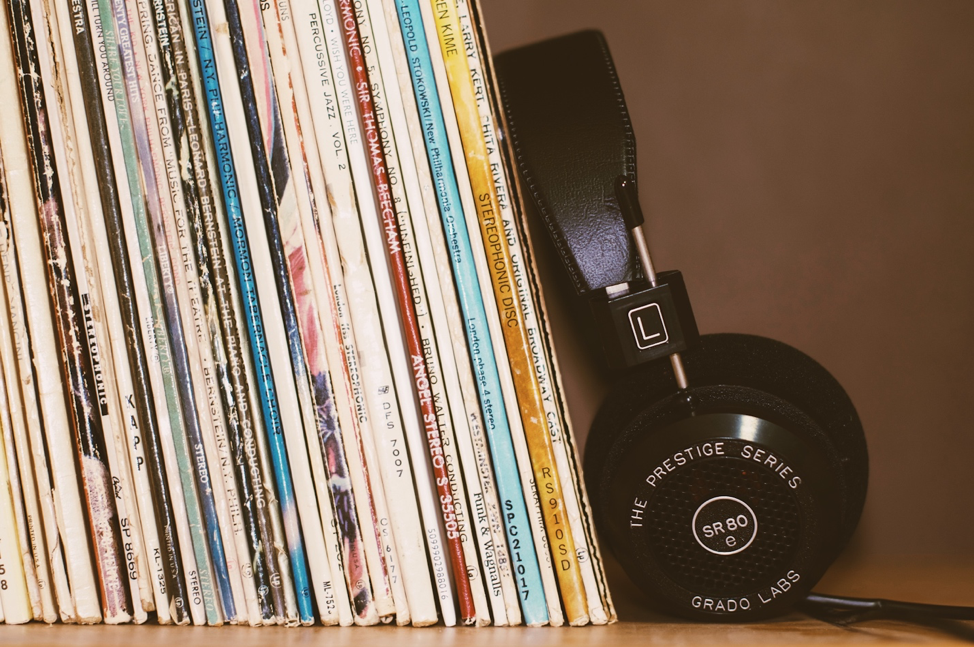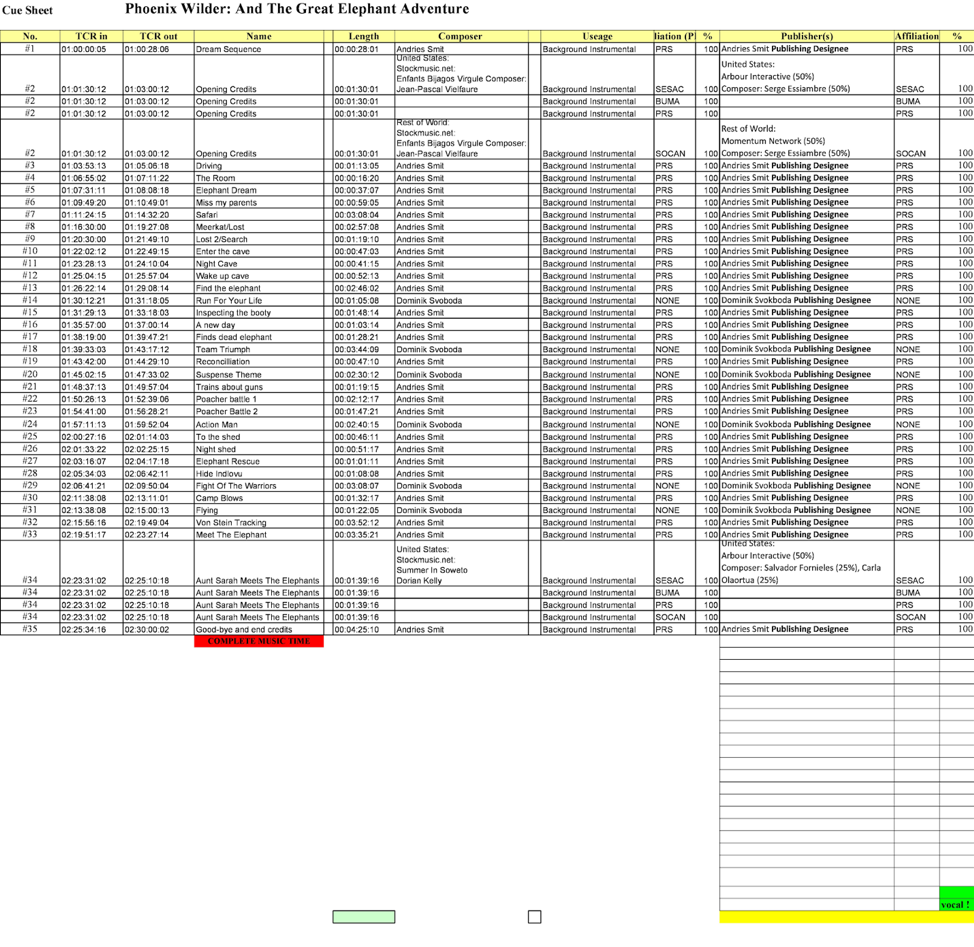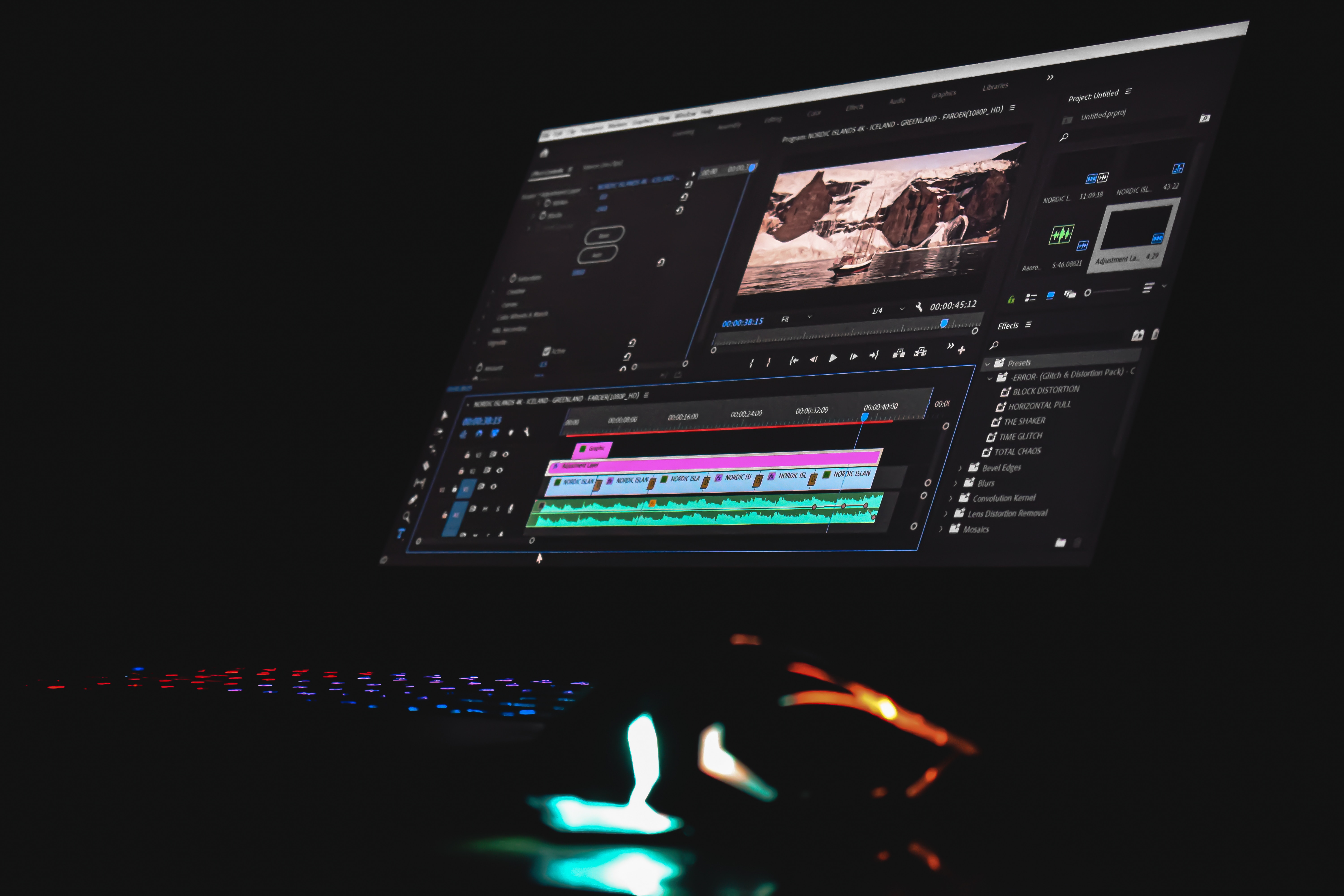How Do Musicians for Movies and TV Get Paid?
Most musicians whose work is used in movies, TV, and web spots are paid up front for their services. However, according to most copyright rules, they are also entitled to ongoing royalties.
Royalties are residual payments that depend on how often a project is utilized, whether that means it is broadcast on TV, a soundtrack is played on the radio, it's streamed on the internet, and so on. Royalties are tracked by Performing Rights Organizations (PROs).
PROs have formulas for calculating the residuals that musicians are owed for their work. But how do they know who's owed what?
The answer lies in the humble cue sheet, a simple document that nonetheless holds a lot of power for the musicians whose income may depend on receiving ongoing royalties. Here is the ultimate guide to cue sheets.
Cue Sheets: An Overview
A cue sheet is simply a written summary of all the musical tracks used in a media production.
According to Broadcast Music, Inc. (BMI), one of the PROs tasked with collecting royalties, the cue sheet contains information about the production and each track, including:
- Title of production (and episode number if it's a TV show)
- Air date
- Show length
- Music length
- Track/cue title
- Composer
- Publisher
- PRO responsible (there are three major ones, which we'll explore below)
- Timing (i.e., the entire song or simply an excerpt)
- Usage
In spite of all the databases of music in the world, cue sheets remain the most indispensable tool for keeping track of how music is used and what royalties are owed to musicians and composers.
According to BMI, "Without cue sheets, it would be nearly impossible for such composers and publishers to be compensated for their work." This comes down to the sheer volume of media productions worldwide, as well as the ever-increasing volume of music being produced.
The task of creating the cue sheet falls to the show's producer or music supervisor, depending on the complexity of the production. Typically, it's a music editor who keeps track in detail within their editing decision list of how much music is used, and where. The cue sheet is passed up the chain of command and refined until it's completely accurate for the final product of the film or TV show, and then sent by the production company to American Society of Composers, Authors, and Publishers (ASCAP).
Once ASCAP has verified the cue sheet, they submit it to the relevant PRO, who will track how often the TV show is aired, the movie is screened or downloaded, or the web commercial is viewed, depending on what context the tracks are used in.
Collecting royalties is a worldwide and ongoing process — it can be quite mind-boggling when you think about its scope and scale. But it all comes down to a meticulous and clear cue sheet.
Cue Sheets: The Devil's in the Details
While most royalties are straightforward, it is cue sheets that note the points of difference that can ultimately be significant to composers. If there are multiple composers for a piece of music, for example, cue sheets need to note this, so that their royalties get split correctly.
Similarly, writers and publishers can negotiate the typical 50-50 royalty split. If they have a different arrangement, the cue sheets should note this so that a PRO can properly administer royalties.
What Are PROs?
PROs evolved to protect the rights of musicians and composers. They recognize that musicians' incomes can fluctuate and that royalties are an important part of their earnings. If a movie or other production is benefiting from the inclusion of a song in its soundtrack, an artist should receive benefits from that inclusion.
PROs look out for the rights of their members, financial and otherwise, including credit. The main PROs are:
- ASCAP
- Society of European Stage Authors and Composers (SESAC)
- BMI
ASCAP is the largest of the PROs, comprising 850,000 member songwriters, composers, and music publishers. Writers and publishers pay an application fee to join, after which they have the worldwide protection of ASCAP.
If you're compiling a cue sheet, you will need to note clearly which of these PROs monitors the rights and collects royalties on behalf of each track you're including.
How to Write a Cue Sheet
It's simple. If you're a producer, simply follow the cue sheet guidelines provided by each PRO. The ASCAP site, for example, features a blank template producers can fill out, as well as instructions and a sample page to use for comparison purposes. ASCAP and BMI use the same, standardized form.
The priority is to provide information that's as accurate as possible, particularly regarding:
- The duration of the songs used
- The way the song is performed, since royalties will be paid out differently if it's a full onscreen performance, versus background soundtrack inclusion
- Royalty payments will differ depending on whether it's a vocal performance or instrumental
ASCAP's website offers different deadlines for their six annual royalty distribution dates. The onus is on networks and production companies to submit cue sheets, not musicians themselves. That's because networks and productions companies will more easily substantiate claims of how long tracks are used on screen and so on.
RapidCue is ASCAP's submission portal for cue sheets. Overall, it is a streamlined process, relying only on accurate information being collated by the music supervisor or production team.
If you're wondering, "Does my film need a cue sheet?" The answer is yes if you've used music, including any original score compositions. It is usually a part of any contract between a production company and a musician.
Cue sheets are a legal requirement so that your musicians, whose work is enhancing your production, are properly paid.
When Do I Submit Cue Sheets?
ASCAP requires cue sheets to be submitted promptly. For TV programs, that means preferably less than 3 months after it is broadcast. When it comes to theatrically released movies, ASCAP requests cue sheets on file before the film's first foreign theatrical performance.
Music Usage Categories
Royalties are paid out differently according to how a song is placed in an audiovisual work. A few of the different possibilities are:
- Opening or closing theme
- Visual vocal — a vocal performance seen on camera
- Featured vocal — vocal music with a visual montage
- Featured instrumental, an instrumental cue that’s not visual
- Background instrumental, off-camera instrumental music
These different categories give you a sense of possible rights holders, which can vary. Performance rights are separated from mechanical rights (the right to make duplicates of a song), so vocalists are paid royalties separately from writers and publishers. Some musicians are not amenable to having their own version of a song licensed for film use, but agree to cover versions or instrumental versions being used. These factors all play into the use of music in soundtracks.
PROs use these cue sheets to collect royalties from TV networks that air your work. One thing you need to know is that as the producer, you are not responsible for paying these royalties. Rather, royalties are paid by the broadcast network that's airing your project.
Royalty-Free Music, Cue Sheets, and PROs
Royalty-free music offers one solution to many of the complexities of production. Royalty-free music is copyrighted music that's created under a system where you don't have to pay ongoing royalties. This means you pay one simple fee upfront (or subscribe to a service), after which you can use the music as often as you like and in as many contexts.
Stock Music offers a wide range of high-quality music made by excellent composers created to help creators get what they need, with a minimum of paperwork and fuss.
Royalty-free music licenses in general eliminate the headache of ongoing royalty payments. However, all broadcasters, including YouTube, pay annual fees to PROs, which is why when you upload work to these sites you're still asked to fill out (that's right) a cue sheet.
If your short film is broadcast on TV, you need to supply them with a cue sheet, too. This will enable the broadcaster's royalties to be paid to the PRO annually in any case, and to ensure it goes to the rightful parties.
So, it's still royalty-free music, since you as the media producer don't have to pay royalties every time you employ a track in a different work. But broadcasters still have to pay their fair share.
But Do I Really Need a Cue Sheet?
If you're uploading your work to YouTube or a similar service, or licensing it to TV or a movie, the answer is a resounding yes. Filling out an accurate cue sheet when you upload your work to the web or try and get it licensed to networks ensures that the right composers get their piece of the compensation pie.
Cue Sheets Are Vital for Any Production
Filling out a cue sheet accurately and submitting it to a PRO is a small, necessary action you can take to benefit the various creators who provided your project's tracks. Stock Music makes it simple to get what you want and satisfy your obligations to PROs and composers.
It allows for annual or monthly affordable subscriptions, as well as one-off purchases. Their site is searchable by genre, emotional tone, instrumentation, and tempo, so you're bound to find what you're looking for.





